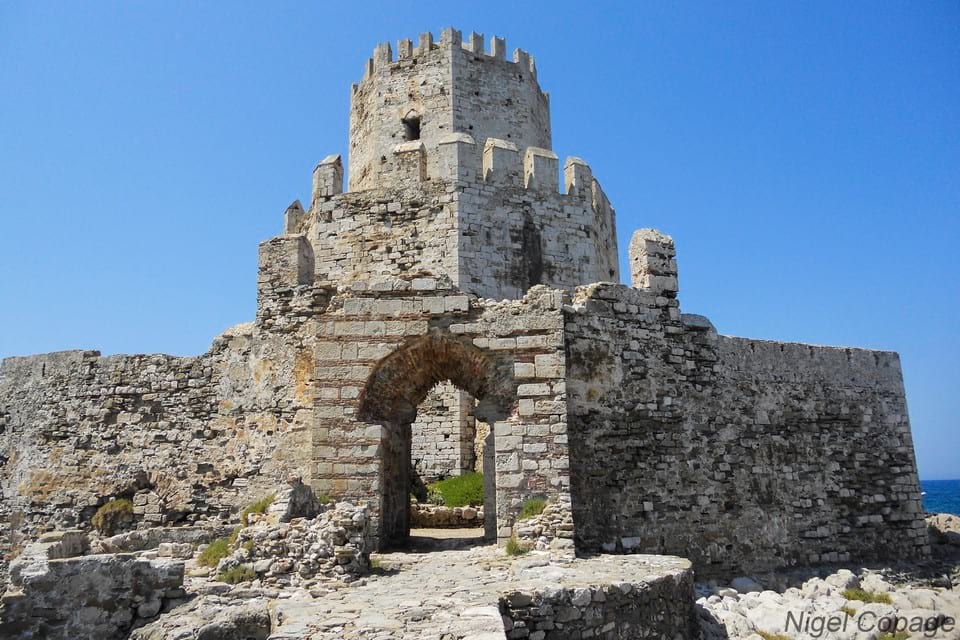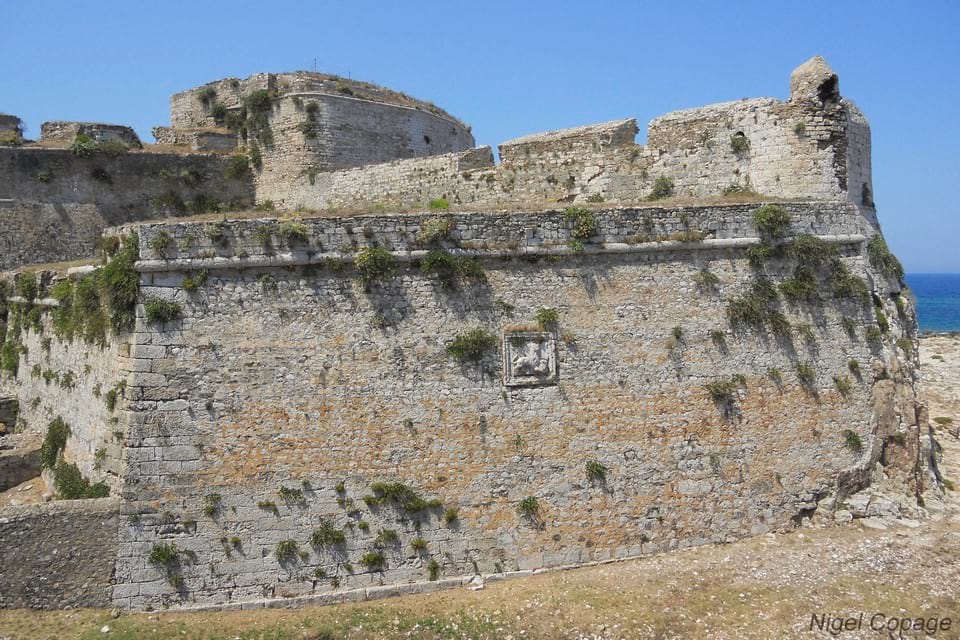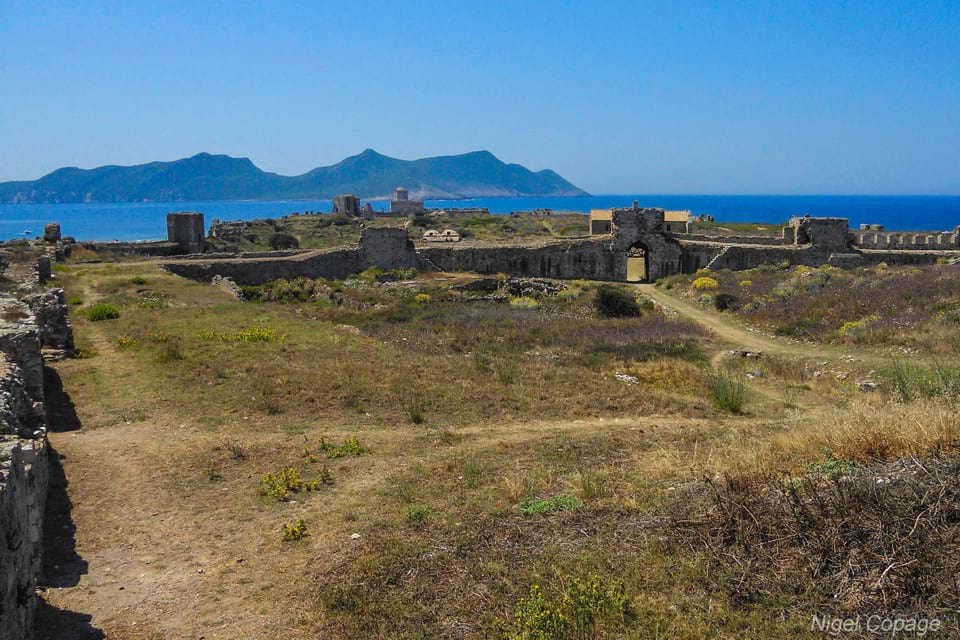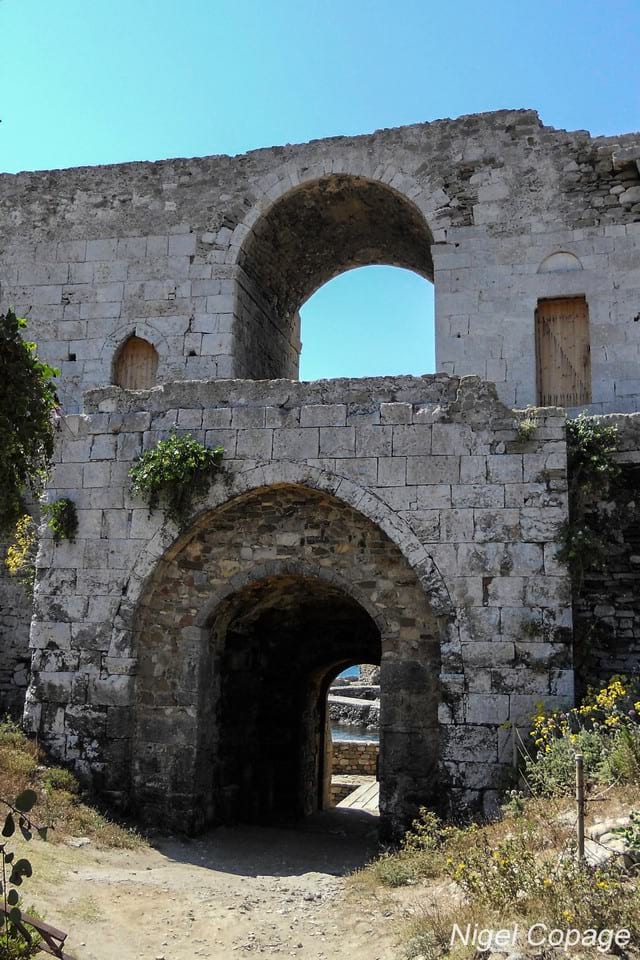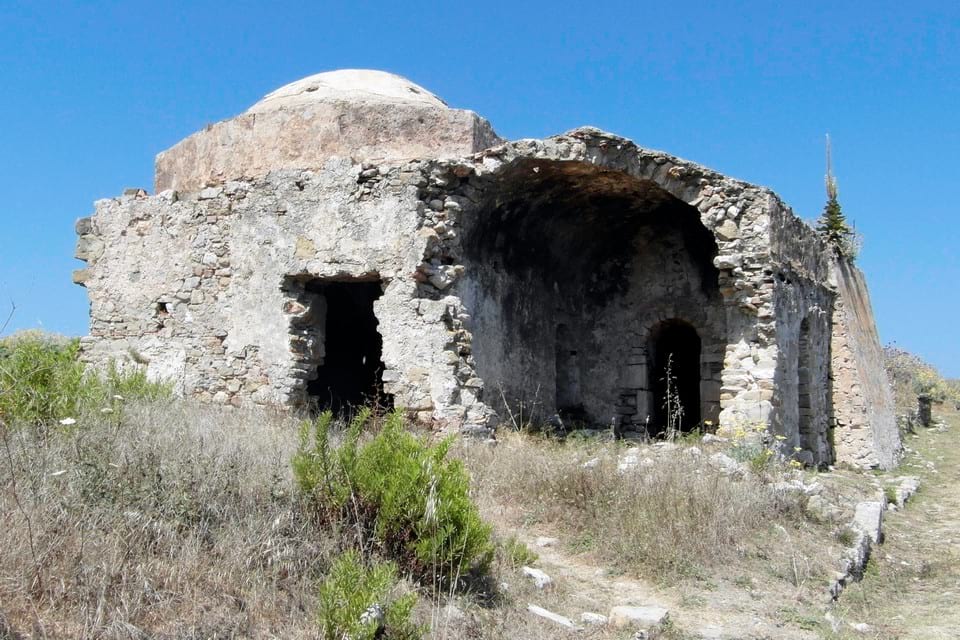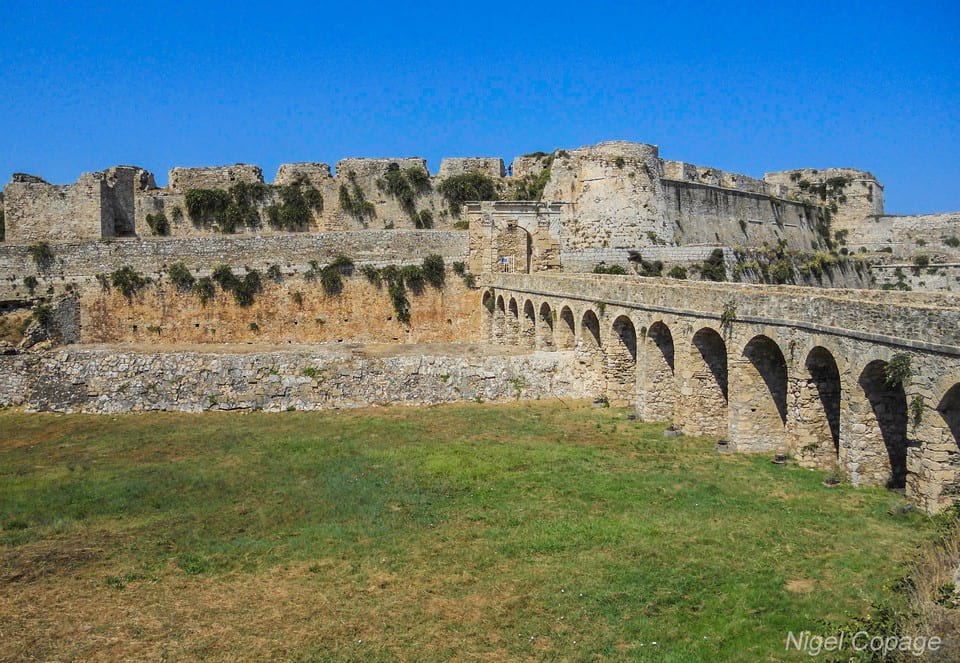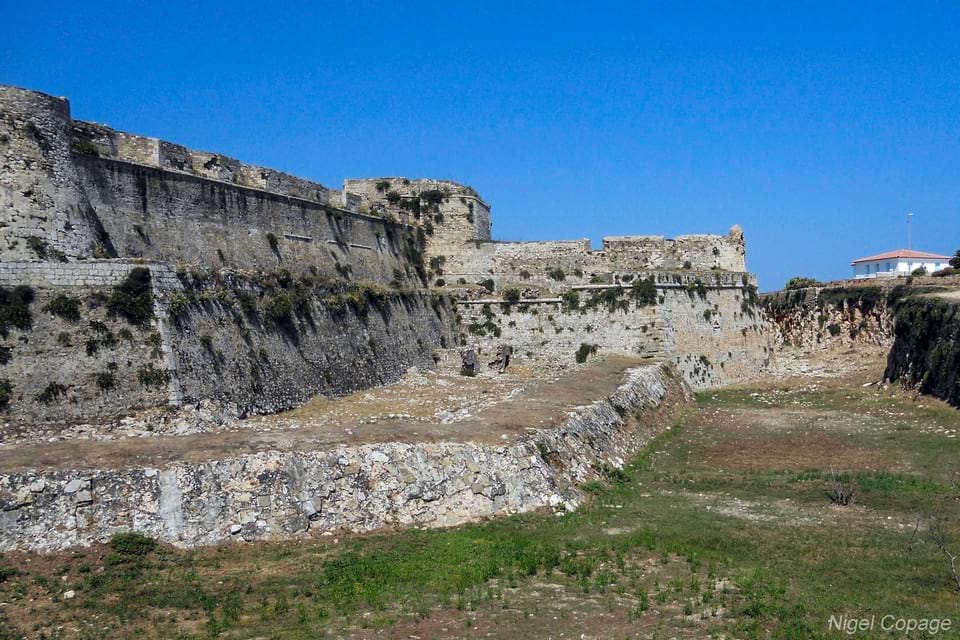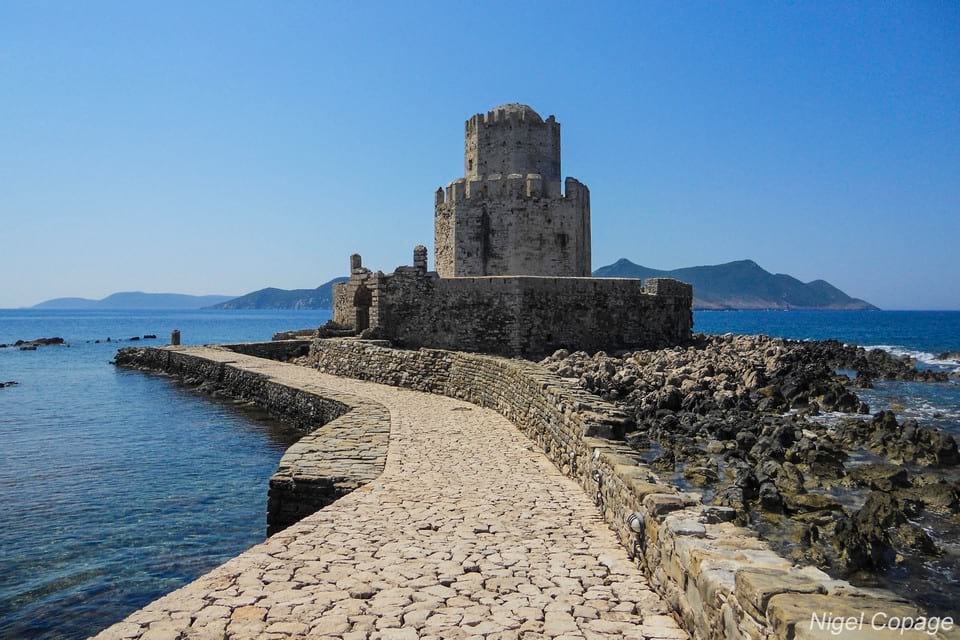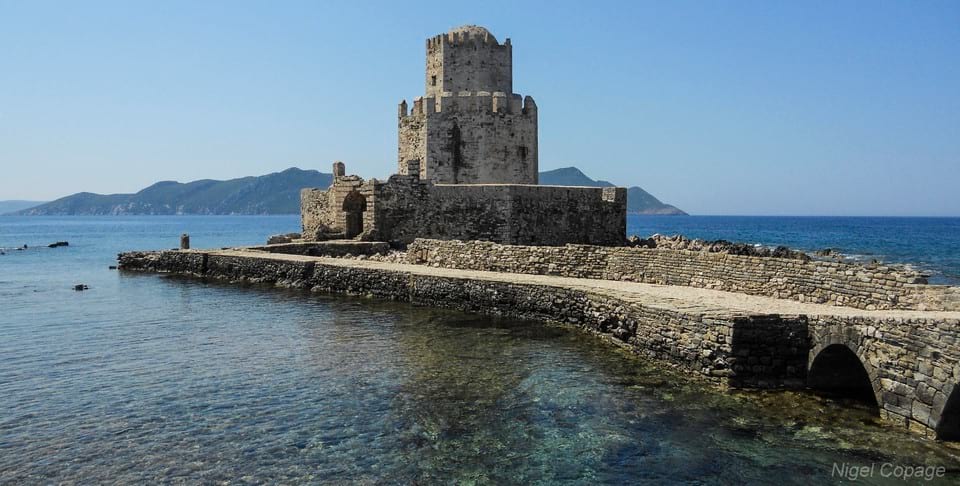
The Castle of Methoni was built by the Venetians in 1209 shortly after they had gained control of the Peloponnese from the Franks. The site extends across a rocky promontory of almost a square kilometer in size and was protected by the sea on three sides and separated from the mainland by a huge man-made moat. It includes a small rocky islet known as “Bourtzi” on which was built an octagonal tower connected by a bridge to the rest of the castle (above photo).
History
The first references to Methoni are by Homer who referred to it as “Pedasus” and described it as “vine-clad”. It is listed as one of the seven cities that Agamemnon offered Achilles at the time of the Trojan War.
In the 4th century BC Methoni was fortified and over the following centuries these fortifications were gradually extended. It remained autonomous until the Roman era when it was favoured by some Roman emperors.
In the Messenian Wars Methoni held out against the Spartans but eventually succumbed. At the end of the second war, the Spartans gave Methoni to the residents of Nauplia (modern day Nafplion) who had recently been expelled from their own city by Argos. When the Theban General defeated Sparta and restored Messenia he allowed the Nauplians to remain.
Pausanias visited in the second century AD and noted that it was called “Mothoni” which he presumed to be named after the small rocky islet “Mothon Lithos”.
During the Byzantine years it was an important port and in the 6th century was used as a naval base from which to launch attacks on the Vandals in North Africa.
By the early thirteenth century as the Byzantine Empire was declining Methoni came under the control of the Frankish Geoffroy de Villehardouin who landed there in 1204. But just two years later the Venetians occupied the city and in 1209 took formal control.
The Venetians began to fortify Methoni (along with nearby Koroni) and it became a major trading centre. It was also an important stop on the route from Venice to the Holy Land and so had great strategic significance. This first period of Venetian occupation was the high point for Methoni as the town population grew and commerce flourished.
The Venetians built on ancient battlements and also added new fortifications. The north part of the city became a heavily defended acropolis. A deep moat was constructed to protect against attacks from the land and access to the citadel was via a large wooden bridge which was in use until 1829 when a stone bridge was built.
In 1500 the leader of the Ottoman Empire, Sultan Bajazit II conquered Methoni after a short siege and 300 years of Venetian rule came to an end. The city was burned and its men were decapitated while women and children were sold into slavery. The Catholic Bishop was among those killed. To repopulate the city the Ottomans decreed that families should be sent from every area of the Morea (the Peloponnese).
It was during this period that the two floor octagonal tower was built upon the small rocky island, connected via a bridge to the sea gate of the main citadel. This was known as “Bourtzi” (Turkish for “tower”) and was used as a lighthouse as well as a prison and a place of execution.
In 1686 the Venetians under Morozini recaptured Methoni and repaired many of the fortifications that had suffered damage or fallen into disrepair. However this second period of Venetian rule was short-lived as in 1715 the Turks laid siege and recaptured the city. During this second period of Turkish occupation the city declined further. The battlements were in poor condition, the harbour became shallow and the population was much reduced.
During the first years of the Greek War of Independence, Methoni was one of the few castles in the Peloponnese which was not taken by Greeks. In 1825 the Egyptian Ibrahim Pasha landed at Methoni and made it his headquarters after being invited by the Turks to help crush the rebellion.
However it was liberated in 1829, shortly after Greece became independent with the help of French forces under general Maison who then settled in the citadel for 4 years. The engineers of the Expédition Scientifique de Morée accompanying Maison built the 14 arch stone bridge over the moat which still provides access to the castle today.
Click here for information on tickets, opening hours etc
